
Olive Oil – Avoiding the Frauds and Finding the Truth – What to know when you’re dealing with Mast Cell Activation Syndrome or Histamine Intolerance
Through my journey with Mast Cell Activation Syndrome and Histamine Intolerance, I mistakenly whittled down my food choices way too much. But olive oil was one of those things that I always tolerated, for some reason.
These days, I know that we want to have lots of nutrient-dense foods in our diet. And we want to focus on swapping foods instead of removing foods. As much as possible.
But one of the traps I fell into was trying to remove any little offender. I got lost in the weeds of finding every little one.
And I realized that while there are a few reliable Histamine Foods lists online…many of the foods lists have a lot of mistakes.
And those mistakes get copied. And new mistakes are made, and so on.
Olive oil is one of those foods that’s gotten a little bit of a bad rap in the histamine circles.
That’s because technically, it’s a bit of a higher histamine food. But on the other hand, it helps increase the histamine-lowering enzyme, diamine oxidase (DAO).
So, for many people with Mast Cell Activation Syndrome and Histamine Intolerance, olive oil may be helpful.
And, of course, there are always exceptions in our community of people with Mast Cell Activation Syndrome, so you have to see if it’s right for you.
Olive oil also has a lot of other health benefits. Ones that have been shown in many scientific studies about olive oil.
It’s always been one of my favorite foods. Especially to drizzle a bold, flavorful olive oil on top of a salad. Or on top of vegetables.
And I really love to dip a cassava flatbread into it!
I found out early on that it’s very hard to find a good quality olive oil.
There are lots of frauds in the olive oil world! This can be one reason why some people have reacted to olive oil. (We’ll talk more about the reasons for reactions below.)
But, these frauds are actually a HUGE issue!
Did you know that nearly all the olive oils on the grocery store shelves are fakes?
Here’s what’s going on.
The vast majority of olive oils are diluted with cheaper oils. Like soy, sunflower, or grape seed oil, for example. These oils are high in inflammatory fats.
And because of lax FDA guidelines, the manufacturers don’t even have to tell you on the label.
Another serious thing that is happening is that they become rancid. This means they’ve actually gone bad… and yet they’re still being sold.
It’s basically like selling expired food.
It’s extremely difficult to find a decent olive oil in the grocery store. Even at higher end grocery stores like Whole Foods, sadly.
I’ve been looking for a long time.
Because of all this, it’s actually taken me about 3 years to find an olive oil that I feel comfortable telling you about.
And in this blog post, I want you to know how to pick a true olive oil that has the best health benefits so you can choose for yourself.
And, I’ll let you know which olive oil I personally use at home.
So, next let’s take a look at olive oil and the different angles of it – For both mast cells and histamine levels.
How Olive Oil Can Support Mast Cells and Histamine Reduction – What to Know When You Have Mast Cell Activation Syndrome or Histamine Intolerance
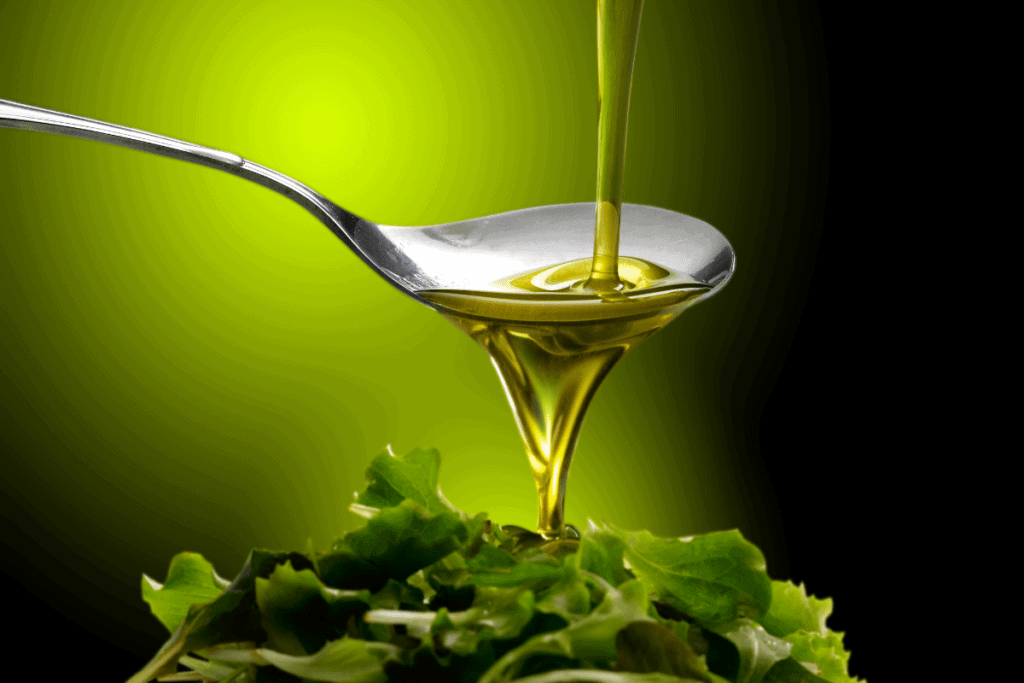
So, olive oil could actually be supportive of the mast cells. One way it does that is by lowering inflammation.
Olive oil’s ability to address inflammation comes partly through what’s called polyphenols.
Polyphenols are types of antioxidants. This means they are very important nutrients we get through plants. And they really help the body recover and heal from all sorts of things.
Some of these powerful nutrients include:
- Gallic acid – This is a powerful polyphenol that can work as an antioxidant and anti-inflammatory. It also has shown it can protect the digestive system, nervous system, and cardiovascular system.
- Hydroxytyrosol – A potent polyphenol that can be especially good for the cardiovascular and nervous system. It also protects the cells. And it may support the immune system to fight against infections.
- Oleocanthal – Powerful anti-inflammatory that was shown in studies to work similarly to ibuprofen. This was shown to work by blocking the production of inflammatory chemicals.
- Tyrosol – This can support the cardiovascular system.
- Oleuropein – Has excellent antioxidant activity, can be inflammation-lowering, may be beneficial for the cardiovascular system, and may help the immune system in fighting infections – according to studies.
- Oleanolic acid – May protect the liver, balance cholesterol levels, and reduce inflammation.
In a 2016 study, hydroxytyrosol was actually found to lessen the body’s response to allergens.
The researchers conclude that hydroxytyrosol may have potential as an allergy-preventative nutrient.
So, olive oil’s polyphenols and healthy fats are supportive of mast cells.
But olive oil isn’t just good for your mast cells. It has many other health supporting benefits – which I’ll tell you about next…
Other Health Benefits of Olive Oil – – What to know when you have Mast Cell Activation Syndrome or Histamine Intolerance
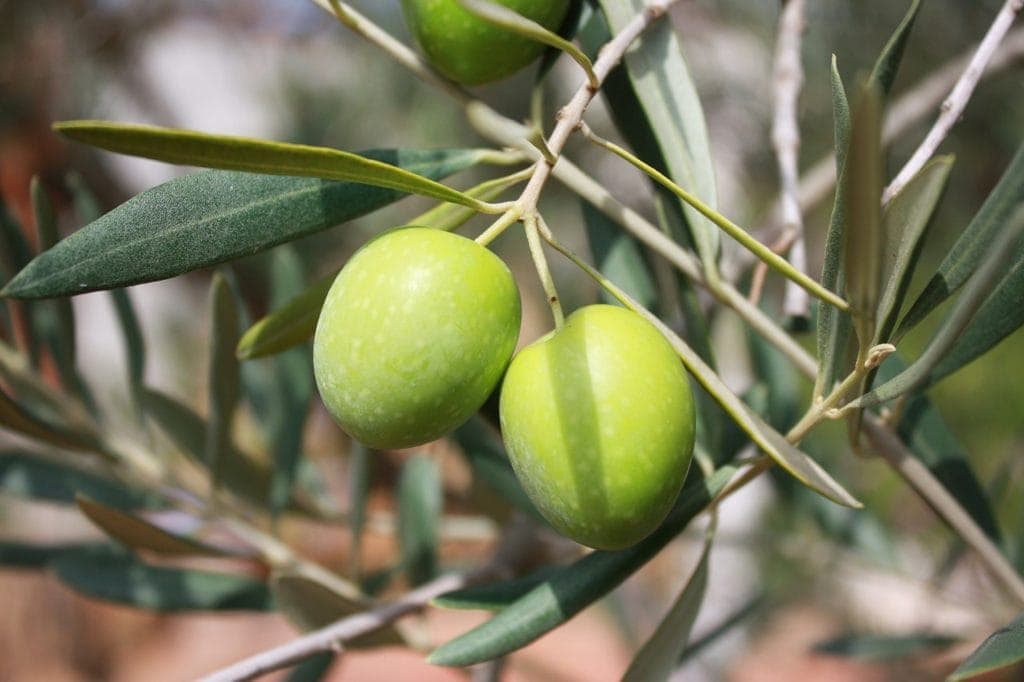
Beyond supporting the mast cells and your body’s ability to lower histamine, olive oil has a lot of other benefits.
- Antioxidants – Olive oil is rich in polyphenols, which are powerful antioxidants.
- Brain Health – Lessening risk for brain degeneration. And helping the brain repair itself after injury.
- Potential cancer risk reduction – Including colon cancer, stomach cancer, breast cancer, and more.
- Anti-inflammatory – Olive oil’s polyphenols have been shown to counteract inflammation in heart disease. And in chronic inflammation.
- Blood Sugar balance – Olive oil reduced fasting blood sugar in studies.
- Decreased risk of heart disease – A high quality olive oil may help raise your “good” (HDL) cholesterol.
- Bone health – Olive oil combined with vitamin D protected against bone loss in studies.
But, olive oil is usually on the NO side of histamine foods list. If it can help mast cells, why is this…?
But, Isn’t Olive Oil High Histamine? What to know when you have Mast Cell Activation Syndrome or Histamine Intolerance
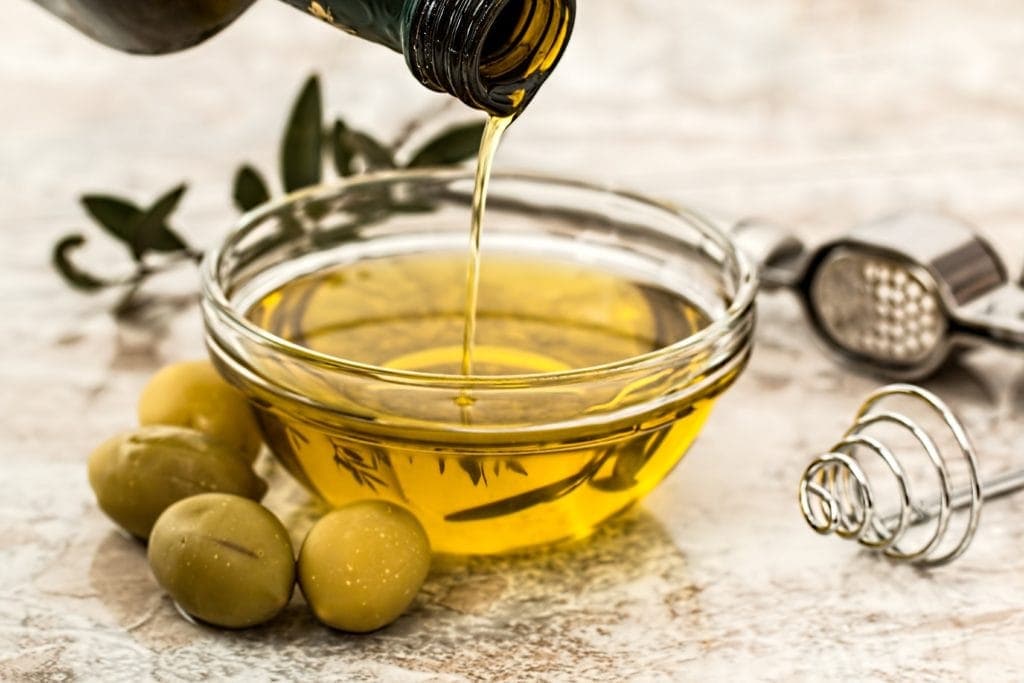
So, olive oil is technically a higher histamine food. In fact, olives are rich in both histamine and a similar molecule called tyramine.
But, olive oil is listed as high histamine on some lists. And even low- or even anti- histamine on other lists. Why is this?
Histamine researcher, Dr. Janice Joneja explained why olives are sometimes put in the yes category and sometimes in the no category on histamine lists.
Because it depends on the individual…and olive oil is a bit of a yes/no situation.
Eating olive oil does initially increase histamine. But later, it triggers the release of DAO, the histamine-lowering enzyme.
For those who have normal DAO levels, this usually won’t cause a problem.
However, for those who have very low DAO levels, olive oil can sometimes raise histamine too much. The first few bites of olive oil for these people can increase histamine.
And if that’s the case for you, the histamine might not be broken down.
So, if that’s you, then you may not be able to do olive oil until your system is calmer. (See the Who Shouldn’t Use Olive Oil section at the end for ideas for next steps.)
With low DAO, it may not matter that olive oil will help break down histamine later on. So, if you don’t know your DAO levels, go slowly with trying olive oil.
But as with most things in the Mast Cell world, it’s not all that simple.
We have to look at olive oil (and all foods) as a whole. One part of it can increase histamine. Another part of it could lower histamine.
Low DAO levels can cause histamine issues. But so can inflammation, like from mast cell activation.
So, if you have low DAO, you may want to try it very slowly at first to see how you do.
And you can increase your DAO levels, since olive oil can help support you in keeping your histamine levels in check. And your mast cells calmed down.
But the benefits of olive oil only apply when you have the real thing.
Unfortunately, most olive oil is fake! Particularly what is found on the grocery store shelves.
I’ll go over what to watch out for in the next section.
Most Olive Oils Are Fakes! What to know when you have Mast Cell Activation Syndrome or Histamine Intolerance

Olive Oil is a frequently counterfeited food item. And nothing angers me more than dishonesty that hurts people.
That’s why I’m sharing this with you about olive oil. So that you’ll know what to watch out for.
So, the worst of the olive oil fraud really started when the Mediterranean diet became popular. This diet uses a lot of olive oil.
And, with the Mediterranean diet fad, selling olive oil became very popular. Which became an area for olive oil makers to make a LOT of money.
But, in the 1990s, the New Yorker uncovered a big olive oil fraud. They reported an olive oil labeled as “Greek olive oil” was actually hazelnut oil and sunflower seed oil.
Then, in 1997 and 1998, officials discovered that olive oil was being diluted with cheaper oils to make it less costly to make. And found olive oil was even mislabeled A LOT in Europe.
Olive oil was found to be the most adulterated plant food in the European Union. This means the quality of olive oil was being drastically lowered with cheaper oils. And it continues today.
The worst part is these dishonest olive oil makers weren’t telling the truth to consumers.
It’s actually pretty shady. Tom Muller wrote a book on it called Extra Virginity: The Sublime and Scandalous World of Olive Oil.
His work showed that the olive oil world is seriously like the mafia. Kinda crazy, huh?
And so, the European Union decided to start an anti-fraud olive oil task force.
And the European Union made some changes. But it’s very hard to change people who are dishonest and profiting off of lies.
And it’s terrible that this fraud still happens today all over the world.
The reason this happens is because olive oil is like the liquid gold of the plant-based oils.
Olive oil is way more valuable than any other plant-based oil. And people can stand to make a lot of money. ESPECIALLY if they cut corners and use shady tactics.
So, many olive oil makers are motivated to make counterfeit olive oil. They even add greenish coloring to soy oil or canola oil. Just so that it looks like olive oil. And they make a huge profit.
And there are many more ways olive oil is faked. It can be cheaply made from olives that are spoiled. Or bruised. All these oils do more harm than good.
And all those fraudulent short-cuts will make these bad quality olive oils much higher histamine!
It’s also important to know that it’s very perishable.
For example:
- If it’s on the shelf too long after harvest, it can spoil.
- If it gets too much light exposure, it can spoil.
- If it gets too much heat exposure, it can spoil.
- If it gets too much air exposure, it can spoil.
Even leaving it open too long on the counter can cause it to break down. Or, if there’s air in the bottle because it’s almost used up.
That’s why you want to get it in dark bottles (opaque). And then use it up fairly quickly after purchase.
And it’s ideal if you can get it shipped right to you. So you know it hasn’t been sitting for months on a shelf.
Don’t buy olive oil that has a:
- Clear bottle – light damages the oil
- Mild flavor
- Rancid flavor
- Fermented or “Fusty” flavor
- Moldy or Musty flavor
All of these can indicate a sub quality or fake olive oil. One that you want to avoid.
But even still, the olive oil fakers are very good at making their bad quality olive oils look like the real thing.
So, the only way to get REAL, authentic olive oil with the health benefits is to trust the maker.
Next, I’ll tell you what to look for to find a REAL/authentic olive oil.
Finding the REAL Olive Oils – What to know when you have Mast Cell Activation Syndrome or Histamine Intolerance
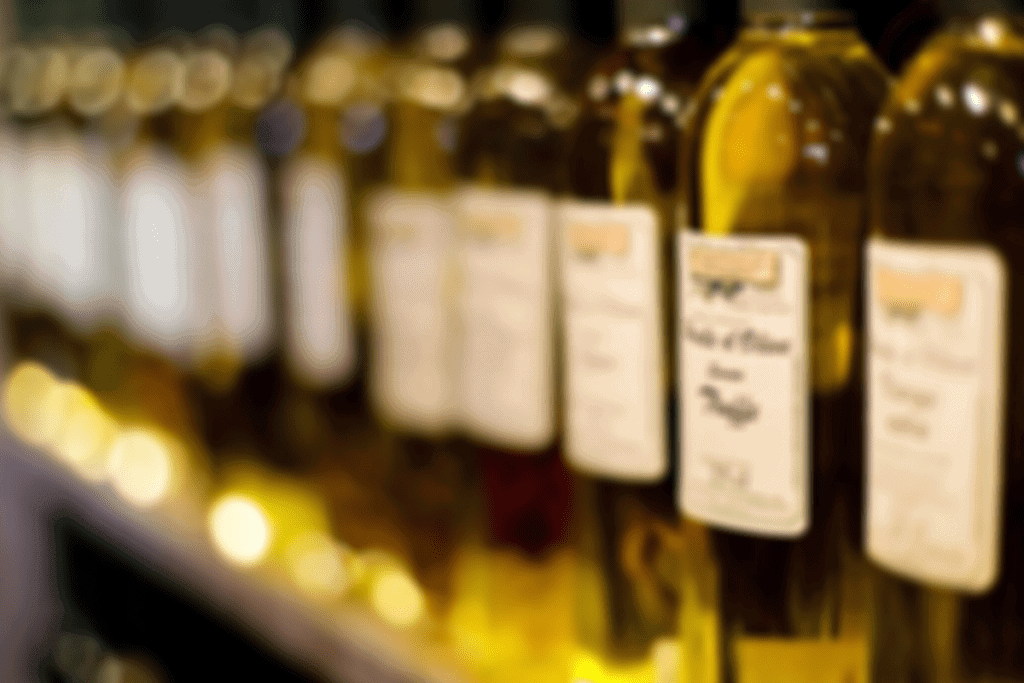
Will the REAL olive oil please stand up?
I spent years trying different olive oils. And trying to make sense of what creates the best olive oil with the best health benefits.
Here are some guidelines I learned for purchasing an authentic olive oil:
- Should be in a dark bottle (olive oil is damaged by heat, light, and air)
- Make sure it’s labeled “extra virgin olive oil” and not “light” or “olive pomace oil” or just “pure” – as it’s likely to have been chemically refined.
- Look for a “pressed on” date or “harvest” date. (They should be one and the same). The ideal is to use it within 6 months of harvest. If there’s a “Best By” date, that’s usually going to be set at 2 years post harvest. So, look for a “Best By” date that is as close to 2 years out as you can.
- Look for the place it was produced; not just “packed in Italy” or “bottled in Italy.” They should tell you the city or specific mill.
- Real olive oil has a peppery, slightly bitter flavor. It should be very flavorful. If it isn’t, it has been “watered” down with low quality “vegetable” oils.
- Look for quality seals like California Olive Oil Council (COOC), Australian Olive Association, or for European oils, PDO or PGI certification. USDA Organic is also a good indicator.
But again, these don’t guarantee it’s authentic olive oil. The bottle can look just right. Flavors can be added to the bottle to make it peppery and bitter.
It was maddening for me!
And maybe a bit overwhelming for you like it was for me.
I have researched dozens of olive oils. And I found 3 authentic options I trusted.
2 of them were great quality. But they were just so overpoweringly grassy tasting, I couldn’t take much of them.
And then there was my top winner I want to share with you.
Let’s learn more about it next…
Why I’m Using Kasandrinos Olive Oil – What to know when you have Mast Cell Activation Syndrome or Histamine Intolerance
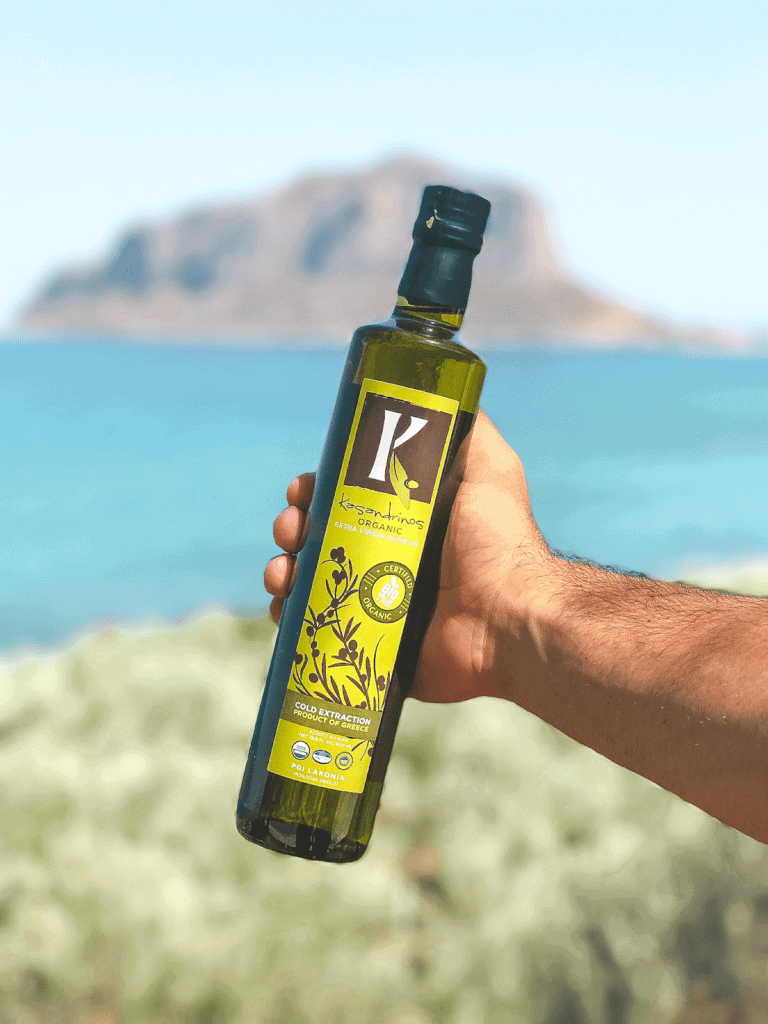
First, I’ve tried over 40 brands of Extra Virgin Olive Oil – no joke! Now, I do use a LOT of olive oil. But also in my quest to find the ones with the best health benefits, I went through a lot of brands.
And my top winner is: Kasandrinos Olive Oil
Here are my runner-ups. Dr. Gundry’s Olive Oil and Fresh Pressed Olive Oil Club.
All are excellent. And I trust all 3. The runner-ups have intensely strong, grassy flavors.
This is one sign of a good quality olive oil. But they ended up being too strong for me to use regularly, unfortunately. But people who like that very strong, bitter, grassy flavor will like them.
Then I found Kasandrinos Olive Oil. And they checked all the boxes for me:
- Great flavor: A mix of Koroneiki olives and Athinolia olives, creating a taste that is both sweet and sharp.
- Grown according to organic standards: No pesticides, herbicides, or fertilizers.
- Top antioxidant status – In fact, there are up to 5.5 mg of polyphenols in each and every tablespoon. And up to 1.6 mg of vitamin E per tablespoon.
- Fresh – They only sell oil that is freshly bottled. It never sits on the shelf for more than one season.
- Made from hand picked olives, which prevents bruising of the olives and preserves the taste and quality.
- Comes from ancient vines of Southern Greece.
- Harvested using Old World methods from land that’s been tended for generations by the Kasandrinos family.
- Cold pressed immediately after harvesting, to prevent rancidity and mold.
- Stored in stainless steel tanks, which protects it from oxidation.
- Preserved in dark glass bottles or BPA-free tin cans.
- Each bottle has a harvest date and lot number. So, you know exactly when and where your oil was harvested and pressed.
- Single-origin: PGI (Protected Geographical Indicator) Certification
- USDA Organic Import Certification and Non-GMO Verified Certification
- Kosher Certification
- Paleo Certification
That’s why Kasandrinos Olive Oil is my top winner. You can’t find it in stores, though. That’s why it took me so long to find them.
Kasandrinos maintains all those top benefits that olive oil is famous for providing. Give it a try today, and let me know what you think.
Kasandrinos offered us a special discount for our Mast Cell 360 community, too!
You can get 10% off any bottle with the link below. Or 50% off any olive oil subscription with coupon code mastcell360.
Here’s where to get your own Kasandrinos olive oil…
>>>>>Get Kasandrinos REAL Olive Oil Today and Save 10% or 50% with coupon code mastcell360
Who shouldn’t use olive oil – What to know when you have Mast Cell Activation Syndrome or Histamine Intolerance
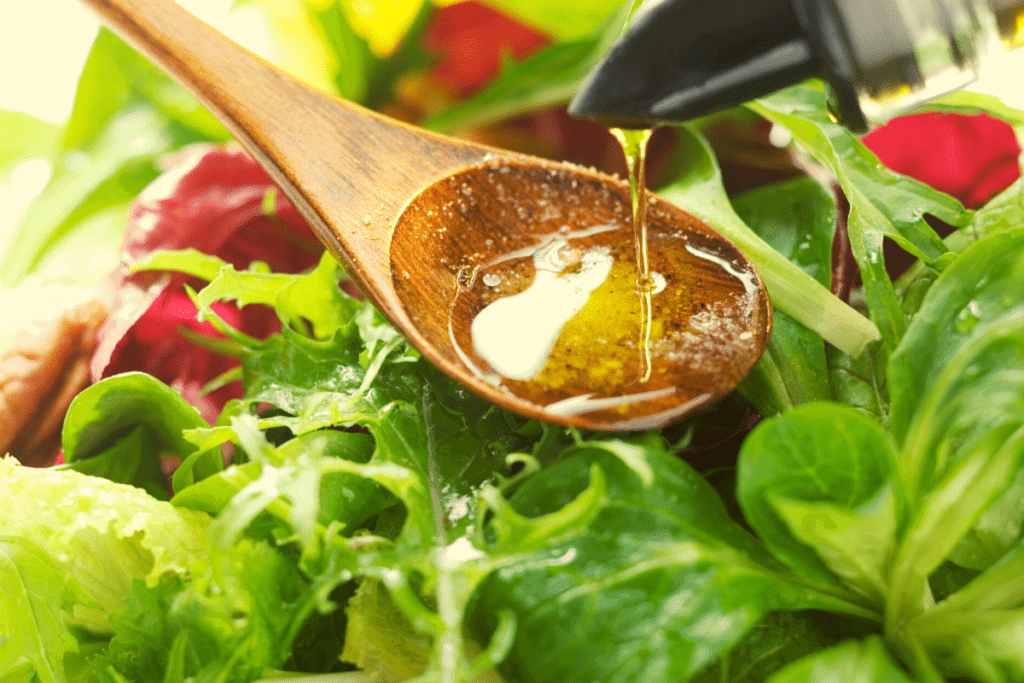
Mast Cell Activation Syndrome is complicated. And some people have a lot more going on than just Mast Cell Activation syndrome.
If you have really low Diamine Oxidase levels (DAO). And if you can’t take DAO supplements, then you may not be able to use olive oil right now. You might have to wait until Phase I or Phase II of the Low Histamine Diet.
If you have salicylate intolerance, you may not tolerate olive oil. This is because it is high salicylate.
Now, salicylate intolerance only affects about 10% of people I work with. So, don’t limit salicylates unnecessarily!
Also, if you have an allergy to olives, you likely won’t be able to tolerate olive oil.
Finally, if you are very limited in foods already, olive oil may not be the first thing to add back in.
In fact, there is a strong connection between food sensitivities and nervous system dysregulation.
This is especially true for people who’ve had mold toxicity, Lyme, or major childhood stressors. If you are stuck with not being able to:
- Add back in foods
- Tolerate supplements
- Tolerate needed medications
- Manage everyday stressors
- Handle the smell of perfumes, paint, cooking smells, etc.
So, if you have a lot of sensitivities, I’d recommend checking out the Mast Cell Nervous System Reboot to see if it’s right for you. You can learn more about it here:
If you don’t have these problems, though, you might want to try a very high quality olive oil. One like Kasandrinos. To see if you tolerate real olive oil better than the fraudulent ones.
If you have Mast Cell Activation Syndrome or Histamine Intolerance, a good way to try new foods is to start with just a few drops. And then wait a couple days. And then try a little more. Then wait a few days. This helps your system get used to it.
And of course, if you have Mast Cell Activation Syndrome, always be under the care of a qualified healthcare provider.
What has your experience been with olive oil? We’d love to hear from you in the comments below!
*Some links in this website are affiliate links, which means Mast Cell 360 may make a very small commission if you purchase through the link. It never costs you any more to purchase through the links, and we try to find the best deals we can. We only recommend products that we love and use personally or use in the Mast Cell 360 practice. Any commissions help support the newsletter, website, and ongoing research so Mast Cell 360 can continue to offer you free tips, recipes, and info. Thank you for your support!
References for Olive Oil – Avoiding the Frauds – What to know when you have Mast Cell Activation Syndrome or Histamine Intolerance
Angeloni, C., Malaguti, M., Barbalace, M. C., & Hrelia, S. (2017). Bioactivity of Olive Oil Phenols in Neuroprotection. International journal of molecular sciences, 18(11), 2230. https://doi.org/10.3390/ijms18112230
Bertelli, M., Kiani, A. K., Paolacci, S., Manara, E., Kurti, D., Dhuli, K., Bushati, V., Miertus, J., Pangallo, D., Baglivo, M., Beccari, T., & Michelini, S. (2020). Hydroxytyrosol: A natural compound with promising pharmacological activities. Journal of biotechnology, 309, 29–33. https://doi.org/10.1016/j.jbiotec.2019.12.016
Bonura, A., Vlah, S., Longo, A., Bulati, M., Melis, M. R., Cibella, F., & Colombo, P. (2016). Hydroxytyrosol modulates Par j 1-induced IL-10 production by PBMCs in healthy subjects. Immunobiology, 221(12), 1374–1377. https://doi.org/10.1016/j.imbio.2016.07.009
Di Benedetto, R., Varì, R., Scazzocchio, B., Filesi, C., Santangelo, C., Giovannini, C., Matarrese, P., D’Archivio, M., & Masella, R. (2007). Tyrosol, the major extra virgin olive oil compound, restored intracellular antioxidant defences in spite of its weak antioxidative effectiveness. Nutrition, metabolism, and cardiovascular diseases : NMCD, 17(7), 535–545. https://doi.org/10.1016/j.numecd.2006.03.005
George, E. S., Marshall, S., Mayr, H. L., Trakman, G. L., Tatucu-Babet, O. A., Lassemillante, A. M., Bramley, A., Reddy, A. J., Forsyth, A., Tierney, A. C., Thomas, C. J., Itsiopoulos, C., & Marx, W. (2019). The effect of high-polyphenol extra virgin olive oil on cardiovascular risk factors: A systematic review and meta-analysis. Critical reviews in food science and nutrition, 59(17), 2772–2795. https://doi.org/10.1080/10408398.2018.1470491
Hajipour, S., Sarkaki, A., Farbood, Y., Eidi, A., Mortazavi, P., & Valizadeh, Z. (2016). Effect of Gallic Acid on Dementia Type of Alzheimer Disease in Rats: Electrophysiological and Histological Studies. Basic and clinical neuroscience, 7(2), 97–106. https://doi.org/10.15412/J.BCN.03070203
Ji, Y., Sakata, Y., Li, X., Zhang, C., Yang, Q., Xu, M., Wollin, A., Langhans, W., & Tso, P. (2013). Lymphatic diamine oxidase secretion stimulated by fat absorption is linked with histamine release. American journal of physiology. Gastrointestinal and liver physiology, 304(8), G732–G740. https://doi.org/10.1152/ajpgi.00399.2012
Joneja, J. (2018). Olive oil and histamine. Histamine-sensitivity.com website. Retrieved from: https://www.histamine-sensitivity.com/olive-oil-and-histamine-11-18.html
Kahkeshani, N., Farzaei, F., Fotouhi, M., Alavi, S. S., Bahramsoltani, R., Naseri, R., Momtaz, S., Abbasabadi, Z., Rahimi, R., Farzaei, M. H., & Bishayee, A. (2019). Pharmacological effects of gallic acid in health and diseases: A mechanistic review. Iranian journal of basic medical sciences, 22(3), 225–237. https://doi.org/10.22038/ijbms.2019.32806.7897
Mueller, T. (2012). Extra Virginity: The sublime and scandalous world of olive oil. W. W. Norton & Company.
Mueller, T. (2007, August 13). Slippery Business: The Trade in Adulterated Olive Oil. The New Yorker.
Omar S. H. (2010). Oleuropein in olive and its pharmacological effects. Scientia pharmaceutica, 78(2), 133–154. https://doi.org/10.3797/scipharm.0912-18
Piroddi, M., Albini, A., Fabiani, R., Giovannelli, L., Luceri, C., Natella, F., Rosignoli, P., Rossi, T., Taticchi, A., Servili, M., & Galli, F. (2017). Nutrigenomics of extra-virgin olive oil: A review. BioFactors (Oxford, England), 43(1), 17–41. https://doi.org/10.1002/biof.1318
Santangelo, C., Filesi, C., Varì, R., Scazzocchio, B., Filardi, T., Fogliano, V., D’Archivio, M., Giovannini, C., Lenzi, A., Morano, S., & Masella, R. (2016). Consumption of extra-virgin olive oil rich in phenolic compounds improves metabolic control in patients with type 2 diabetes mellitus: a possible involvement of reduced levels of circulating visfatin. Journal of endocrinological investigation, 39(11), 1295–1301. https://doi.org/10.1007/s40618-016-0506-9
Smith, A. B., 3rd, Sperry, J. B., & Han, Q. (2007). Syntheses of (-)-oleocanthal, a natural NSAID found in extra virgin olive oil, the (-)-deacetoxy-oleuropein aglycone, and related analogues. The Journal of organic chemistry, 72(18), 6891–6900. https://doi.org/10.1021/jo071146k
Souza, P., Marcadenti, A., & Portal, V. L. (2017). Effects of Olive Oil Phenolic Compounds on Inflammation in the Prevention and Treatment of Coronary Artery Disease. Nutrients, 9(10), 1087. https://doi.org/10.3390/nu9101087
Waterman, E., & Lockwood, B. (2007). Active components and clinical applications of olive oil. Alternative medicine review : a journal of clinical therapeutic, 12(4), 331–342.





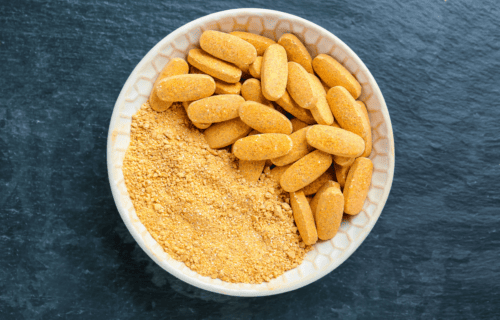
Wondering about avocado oil also. Are there similar issues with histamine and/or DAO?
On the foods list which you can find here: https://mastcell360.com/low-histamine-foods-list/ it says use avocado oil cautiously if DAO levels are very low. This is a good quality one which Beth has had success with. https://www.amazon.com/Olivado-Extra-Virgin-Avocado-ounces/dp/B000F8XYA0/ref=as_li_ss_tl?dchild=1&keywords=olivado+olive+oil&qid=1588014818&sr=8-5&linkCode=sl1&tag=mc360-20&linkId=b7aee67c8f21b20c88b2dbddf502c607&language=en_US
If you decide to try it, be sure to start slowly if you aren’t sure if you will have a reaction. And always be sure to see your doctor with any reactions or concerns.
Suz
Thanks alot for shedding light on this topic.. I could have never imagined that olive oil would be altered with other ‘cheap oils’.
I’ve been using Kasandrinos olive oil for years now! It’s definitely the best and only brand I trust! I actually save by subscribing and having my order shipped once a month. I don’t travel much anymore these days for obvious reasons, but when I do, I’m sure to carry their travel packets with me. It’s good to know their EVOO can also help my MCAS! 🙂
Nice writeup. A few days ago for the first time in a long time I had olive oil. Within a few minutes my throat went a little numb making it somewhat difficult to swallow.
Happens from time to time with various foods. Numbness goes away in a couple of hours.
I’m guessing my olive oil was adulterated and old.
Thank you for all the information regarding oil, I had no idea it was difficult to find the right kind. I investigated olive oil a while ago and found the California Olive Ranch is just what we need. My husband and I are big oil fans and this kind has never bothered me in any way. I am really relieved. We go through it quite fast. Been using it for quite a few years now. Thank you for all your research.
Excellent post, as usual. I’ve been on the hunt for the best, most healthy olive oil for several years. Appreciate the link. Will try it!
I have never had a problem with extra virgin olive oil. I buy it in a dark bottle, use quite a bit daily and try to buy organic and try to protect it from light, air and heat. I usually use it within two weeks. I have multiple sensitivities to food, supplements,. medications and other things. I usually can tell just by inhaling the molecules given off by something if I am unable to tolerate it. I will also put a small amount on or under my tongue if I am uncertain. I believe I have mast cell activation syndrome but not histamine intolerance. However I do not want to consume rancid, contaminated or fake olive oil for general health reasons and I will follow your guidelines and likely purchase one of the three products you approve. I have high confidence in your capabilities and trustworthiness and though I have followed your Nervous System Reboot program for less than one month I have greatly benefited and I highly recommend anyone with mcas or histamine intolerance to try it. Thank you and your team for all you do. Glen Hollywood, Fl
Hi Glen,
I am so glad to hear that the course has already been beneficial! Thank you for the feedback. I hope you like the olive oil as we here at Mast Cell 360 do.
Very informative article, thank you MastCell360 team!
I did some research on small California organic olive oil growers and producers, and found two that I really like, Bozzano Olive Ranch and Apollo Olive Oil. They both grow their own olives on their farms in CA, hand pick, cold press, sell oil by harvest date, are organic and certified by the California Olive Oil Council. They have a variety of oils made from different olives for olive oil that is very light to strong in flavor. Check out their websites.